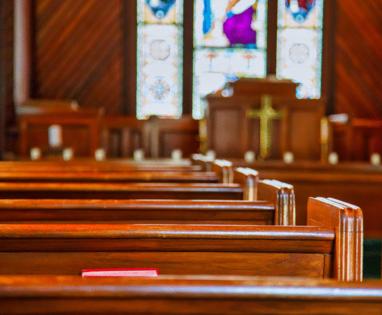Christianity saw 'steep drop' in US over past decade, study finds. Here's why
Published in News & Features
Christianity declined more than any other religious group in the United States in the past decade, but remains the majority, according to a new analysis.
The share of Christians making up the country’s population decreased by 14.3 percentage points between 2010 and 2020, according to a Pew Research Center study released June 9 describing changes in the world’s religious makeup.
The analysis covers 201 countries and territories with populations of at least 100,000 people and is based on more than 2,700 data sources — including censuses, demographic surveys, population surveys and registers — collected over the past decade, researchers said.
Christianity was also the only religion in North America — including the U.S. and Canada — that declined in that time period, falling 11%, the analysis found.
The decline can be attributed to a large number of Christians leaving their religious identity, a form of “religious switching,” researchers said, adding that surveys since 2020 show that the decline may have plateaued.
North America saw “a steep drop in Christians as a percentage of the region’s overall population, and a corresponding rise in the percentage of the population that is religiously unaffiliated,” researchers said.
The number of religious “nones” in the U.S. grew by more than 90% in the past decade, according to the analysis.
What is religious switching?
Religious switching is when a person leaves the religious group they were a part of during their childhood for a different religious identity, according to researchers who said a majority of people stick with the religion in which they were raised.
The growth of religious “nones” is largely due to religious switching from people who grew up as Christians, the analysis found.
Which other religious groups grew in North America?
Many religious groups grew faster than the religion’s population overall, with people in the “other religions” category experiencing the highest percentage of growth at 62% in North America, according to the study.
Hindus and Muslims in North America experienced the second highest percentage of growth, up 55% and 52%, respectively, the study found.
Buddhists in the region grew by 27%, according to the analysis.
The region’s share of Jewish population grew the smallest amount, less than 1%, researchers said, attributing it to “a relatively old age structure, low fertility rates and the absence of any major, new wave of Jewish immigration.”
What drives religious change?
In the past decade four main elements — age structure, fertility, life expectancy and religious switching — drove religious change, the study found.
“Younger groups with relatively high fertility and longer life expectancies have a demographic advantage because of their greater potential for ‘natural increase,’” researchers said.
For example, Muslims — the religious group that experienced the highest growth rate globally — did so because of their young age structure and high fertility rate, according to researchers.
_____
©2025 The Charlotte Observer. Visit charlotteobserver.com. Distributed by Tribune Content Agency, LLC.







Comments